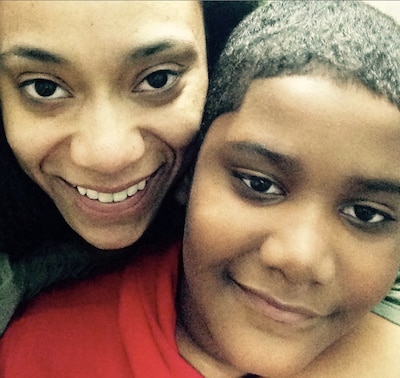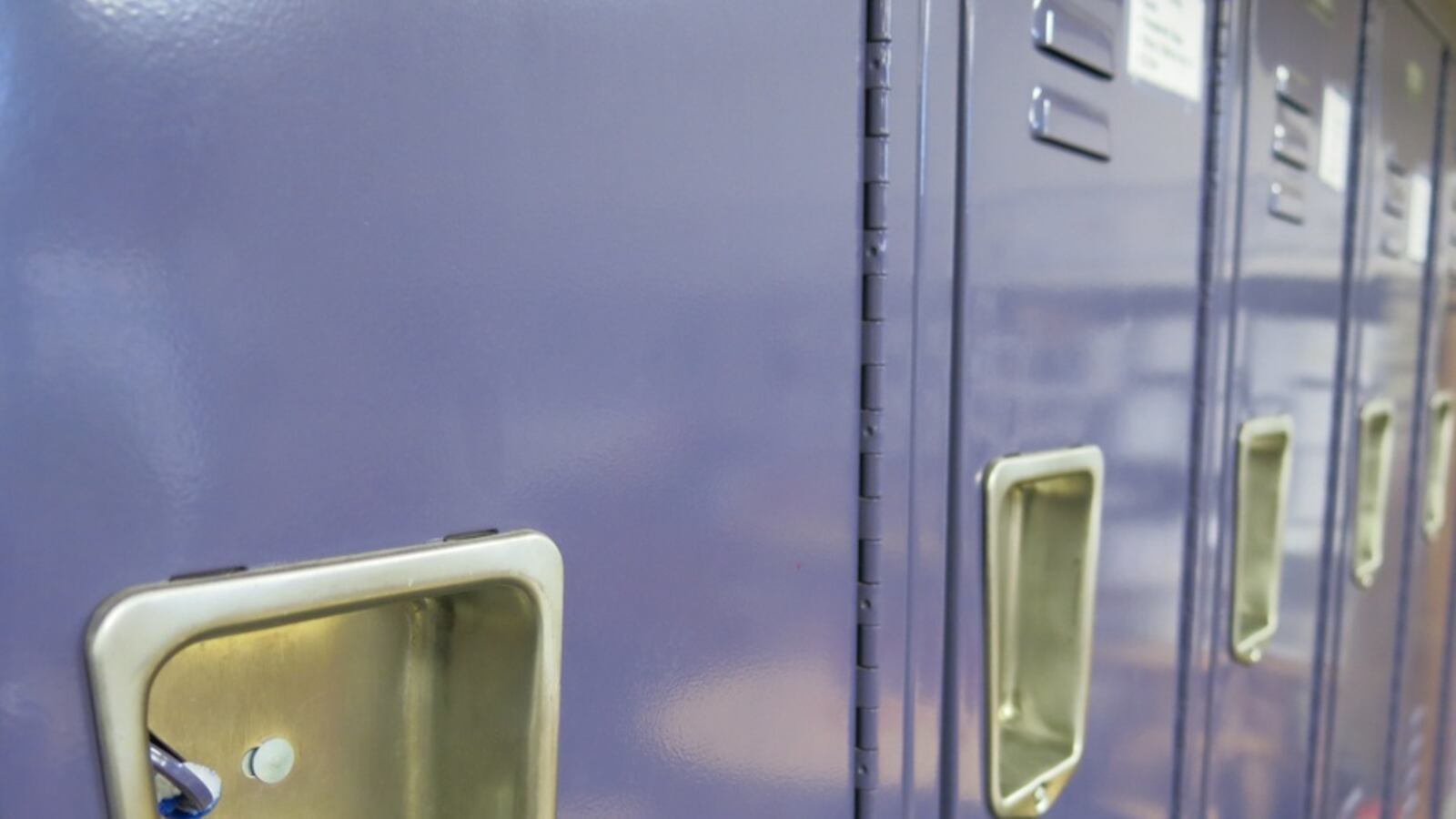Updated — New York City charter schools suspended students at almost three times the rate of traditional public schools during the 2011-12 school year, according to a Chalkbeat analysis, though some charter schools have since begun to reduce the use of suspensions for minor infractions.
Overall, charter schools suspended at least 11 percent of their students that year, while district schools suspended 4.2 percent of their students. The charter-school suspension rate is likely an underestimate because charter schools don’t have to report suspensions that students serve in school.
Not all schools had high suspension rates. One-third of charter schools reported suspending fewer than 5 percent of their students, and many schools said they did not give out any out-of-school suspensions. But 11 charter schools suspended more than 30 percent of their students — a figure likely to draw added scrutiny amid a nationwide push to reduce suspensions and a debate over allowing more charter schools to open statewide.
Chalkbeat’s analysis is based on data that charter schools report to the state education department and the more detailed reports of suspensions in district schools. It includes data from 130 city charter schools open in 2011-12, the last year for which data is publicly available. [More on our analysis here.]
The analysis offers a clearer picture of how out-of-school suspensions are used to deal with misbehavior in the city’s growing charter-school sector, which now serves more than 83,000 students, most of whom are black or Hispanic.
Meanwhile, some of the city’s charter-school networks that have long championed “sweat-the-small-stuff” discipline practices say they have been moved to change their policies.
“When you make the numbers visible, when you hold up a mirror, you’re able to see your actions,” said Ron Chaluisan, who oversees the charter schools run by New Visions for Public Schools network. “When you’re able to see your actions, you’re able to change your behaviors.”
An ongoing debate
Unlike traditional district schools, charter schools are free to craft their own discipline policies, and some have used that autonomy to establish strict behavior codes. Escalating consequences for misdeeds like chewing gum, tardiness, talking out of turn, and dress-code violations are standard, and students who break rules repeatedly can find themselves suspended quickly.
Schools say suspensions maintain order, keep children safe, and allow teachers to focus on instruction by removing the most distracting students. Strict discipline has long been a cornerstone of the charter-school movement, and supporters argue that those policies have led to better academic outcomes for a majority of their students.
“Many families are flocking to charter schools, and one reason is that they believe in stricter discipline,” said Eva Moskowitz, founder and CEO of Success Academy, whose nine schools in 2011-12 suspended 17 percent of their students at least once. “Having some kids miss a day of instruction here and there for a suspension is far outweighed by the benefits of learning in an orderly environment all of the other days, as our academic results prove.”
Nationwide, charter and district schools are moving in a different direction. Los Angeles and San Francisco have barred suspensions of some or all students for nonviolent offenses, spurred by the findings of researchers like Robert Balfanz of the Johns Hopkins University School of Education linking middle-school suspensions to high school dropout rates.
“The theory is, [suspensions] are the equivalent of an adolescent time-out period and perhaps a means to teach the lesson that good behavior is expected in schools,” said Balfanz. But far too often, he says, students interpret suspension as being shunned and “get the message that they are not wanted in school.”
“Overreliance on suspension is an issue that needs to be addressed for all public schools, including charter schools,” said Paulina Davis, a staff attorney at Advocates for Children who represents charter-school students in disciplinary cases.
New York City’s 1,650 district schools also offer a range of suspension rates. About 40 percent gave few or no suspensions, while nearly 200 others doled out more than 100 suspensions in the 2011-12 school year, according to city data.
City officials have heeded the call for reducing suspensions in recent years, and the de Blasio administration has proposed further discipline code changes toward that end. The changes will not affect charter schools.
A parent’s experience
At Excellence Boys Charter School, part of the Uncommon Schools network, students’ small sins add up. (Full disclosure: The reporter of this article is married to an employee at another Uncommon school.)
In 2011-12, the all-boys elementary and middle school suspended 40 percent of its students, the second-highest rate among the city’s charter schools. For some students, missing school for a suspension can become routine.

Shirley Paulino said her son’s experience at the Bedford-Stuyvesant school changed when he entered the fifth grade. There were more teachers, larger classes and a new rigid discipline policy called the “Scoreboard System.” Under the system, students are docked a certain number of points if they break one of the school’s many rules: two points for chewing gum, five points for lateness, and 10 points for disrespecting an adult or classmate.
Paulino’s son often ended the week with a 50-point deficit — and an automatic out-of-school suspension. All told, Paulino said her son missed 23 days due to suspensions last year.
“There was never a fight, he was never a danger,” said Paulino, who said her son, now in a district middle school, was diagnosed with ADHD earlier this year. “He just doesn’t know when to be quiet.”
Chalkbeat’s analysis of out-of-school suspension numbers found that Uncommon Schools’ network-wide suspension rate in 2011-12 was 22 percent, making it one of five charter networks that suspended more than 20 percent of their students that year. The others were New Visions (25 percent), Ascend Learning (24 percent), Achievement First (22 percent), and Democracy Prep (21 percent).
Uncommon Schools is reviewing its discipline policies, a spokesman said. “We believe that we are making steps in the right direction towards a reduction in suspensions,” said the spokesman, Jon Reinish.
One well-known network, Icahn Charter Schools, did not report suspending a single student in any of its three schools open that year. Two other small networks, Public Prep and Harlem Children’s Zone, had suspension rates in the low single digits. (Charter schools do not have to report their in-school suspension numbers, though district schools do. Charter schools also aren’t required to report expulsions.)
The highest single charter-school suspension rate, 51 percent, belonged to Broome Street Academy, which opened in 2011 and serves a large number of students who are homeless or in foster care.
Broome Street had a rocky first year, according to an early evaluation, but seems to have turned a corner under a new principal, Barbara McKeon, who came on in 2013. After a visit to the school in March, Chancellor Carmen Fariña praised its school culture and selected it to help other schools improve their own. A spokeswoman for the school said 20 percent of students were suspended in 2013-14.
The rise of suspensions
The “zero-tolerance” approach to discipline that is linked to high suspension rates has its roots not in charter schools, but in the 1994 Gun Free Schools Act, which mandated harsh punishments for students who brought firearms or drugs to schools across the country. Suspensions increased nationally and continued to climb in New York City under Mayor Michael Bloomberg. A school safety plan established under Bloomberg expedited the removal of students who got in trouble repeatedly.
In the later years of Bloomberg’s tenure, the city’s strategies changed. The City Council passed a transparency bill that regularly publicizes school suspensions and arrests. The discipline code underwent rounds of changes meant to restrict suspensions, and suspensions and arrests began trending downward.
Charter schools have largely been left out of public debates about discipline, in part because of their autonomy and also because the state doesn’t release charter-school suspension statistics until they are nearly three years out of date.
But as Gov. Andrew Cuomo looks to increase the state’s charter school cap by 200 schools, the numbers are coming under more scrutiny. A report released by Advocates for Children this month found that a large portion of the city’s charter schools had discipline policies that violated state and federal laws, prompting calls for more thorough reporting of discipline data.
“To deal with the sky-high suspension rates that characterize too many charters, the schools should be required to follow the same suspension laws, regulations and reporting requirements as district schools,” United Federation of Teachers President Michael Mulgrew, whose union has lost ground to charter schools over the last decade, told state lawmakers last month.
A work in progress
Some charter schools that had the highest suspension rates three years ago say they’ve since made changes.
The Achievement First and Ascend Learning networks have seen significant drops in their suspension rates in the last three years, according to data provided by the networks. Democracy Prep saw a more modest decrease, while New Vision’s suspensions had actually increased. Uncommon declined to provide updated data.
“We recognized that the suspension numbers at some of our schools were simply too high, and we’ve worked hard to reduce them,” said Amanda Pinto, a spokeswoman for Achievement First, who said the network’s suspension rate dropped from 22 percent in 2011-12 to 13.9 percent last year. The decrease followed changes to their suspension policies and a closer tracking of suspension statistics, she said.
And despite Moskowitz’s public defense of suspensions, Success Academy’s suspension rates have fallen from 17 percent to 11 percent last year, according to spokeswoman Ann Powell.
But at the two charter high schools opened by New Visions in 2011, the problem got worse before getting better. Suspension rates peaked last year at 43 percent at New Visions Charter High School for Advanced Math and Science and and 21 percent at New Visions High School for the Humanities.
“Pretty much everyone on my team was a bit taken aback” when they saw how high their suspension rates were, said Chaluisan, the New Visions vice president. This year, both schools’ rates were on pace to drop, he said.
Chaluisan attributed the high rates to the fact that the school is still new and said he had hired someone with experience in restorative justice who is working with guidance counselors to come up with alternative consequences for misbehavior. Providing monthly updates to each schools’ board has also put more attention on the issue, he said.
Ascend has also decreased its suspension rates. In 2011-12, it had the highest suspension rate of any network, suspending 26 percent of its students. CEO Steven Wilson hired a new dean, Janna Genzlinger, now a managing director at one of the schools, who has rolled out a new discipline model that emphasizes “logical consequences” to fit a student’s misbehavior. If a child draws on a desk, she has to stay after school to clean it, for example.
Suspension rates at Ascend’s elementary schools halfway through this school year range from 2 percent to 6 percent, an Ascend spokeswoman said.
“This is kind of the next generation innovation in charter schooling,” said Wilson. With the old policies, “There was real progress. But it came at the cost of not serving a large number of students.”
View the database we created to analyze suspension rates at city charter schools here.
Get your daily dose of New York City education news by signing up for our Rise & Shine newsletter.

